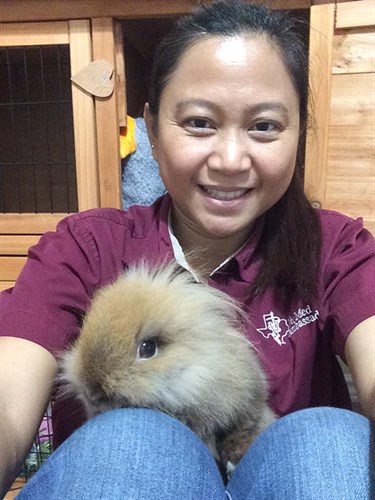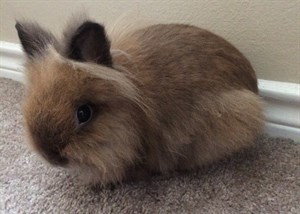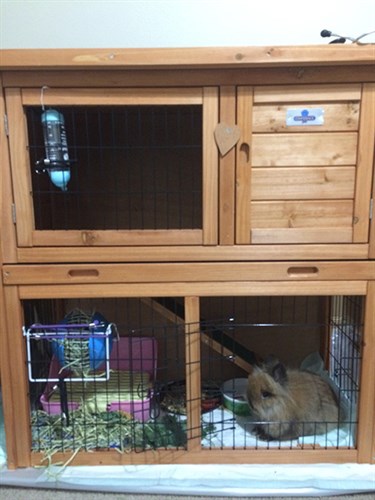 Nine years ago, I informed my boss that I was leaving the company where I had been working for 12 years to pursue a career in veterinary medicine. The only thing I had at that point was a serious commitment to start this journey.
Nine years ago, I informed my boss that I was leaving the company where I had been working for 12 years to pursue a career in veterinary medicine. The only thing I had at that point was a serious commitment to start this journey.
But now my long journey to become a veterinarian has come to the last 15 months of veterinary school. In three months, I will start my clinical rotations, during which fourth-year veterinary students spend a whole year working in the Veterinary Medical Teaching Hospital as a real “baby” doctor.
I feel both panicked and excited to realize that my dream of becoming a veterinarian is about to come true.
I still remember the end of my first day as a veterinary student. I went home and cried. Why? I thought “Physiology” and “Anatomy” were so hard. I had thousands of pieces of jigsaw puzzles in my head. I asked myself, “How am I going to pass these classes?”
Now, I am a third-year veterinary student. And I have the answer for that question.
For the first two years, I learned the different aspects of veterinary medicine: physiology, anatomy, immunology, histology, neuroanatomy, infectious diseases, parasitology, microbiology, pathology, surgery, anesthesia, public health, pharmacology, toxicology, radiology, and many more. Each class is the part of the jigsaw board and has its own space to fill up.
The curriculum is designed to lay the foundation of medical knowledge, and by my third year, all of those jigsaw pieces start coming together and I could see the picture clearer.
I love small animal medicine, through which I can apply the foundational knowledge by analyzing, diagnosing, planning for testing, and offering treatments. Even though I choose to focus on companion animals, I also have learned about large animal medicine.
Additionally, I have selected electives to study particular topics of interest to me in small animals, equine, food animal, swine, avian, and exotics medicine. Some of my highlights were “Oncology,” “Cardiology,” “Clinical Pathology,” “Emergency Medicine,” and “Dermatology.”
Before the end of my third year, I will also have “Avian Medicine,” “Dentistry,” “Feline Medicine” and “Gastroenterology” classes. These are all bits of knowledge I will retain for my career.
It has been a long wait, but the fourth year is just around the corner. My last section of the jigsaw puzzle is about to be complete.
This beautiful picture from my White Coat Ceremony (held at the end of your second year) keeps me encouraged until I walk across the stage to become “Dr. Du, DVM.


 I rarely get asked this—I’m more commonly asked how hard it is to get into veterinary school—but this is an important question, because, in my opinion, I think that it is harder to complete a DVM degree than it is to get accepted to veterinary school.
I rarely get asked this—I’m more commonly asked how hard it is to get into veterinary school—but this is an important question, because, in my opinion, I think that it is harder to complete a DVM degree than it is to get accepted to veterinary school. CVM Counselor—I used to be afraid to let people know that I’m struggling through my classes. I stayed stressed and grumpy for my whole first-year fall semester. I became an unhappy and frustrated person, which impacted my productivity. I decided to seek help from CVM counselor Elizabeth Eaton. She guided me through accepting my weaknesses and fear of failure. I feel lucky that the Texas A&M Vet School takes the students’ mental health and wellness seriously. We also have a stress reduction room and relaxation space, where we have a massage chair and biofeedback equipment to help de-stress and help the body to achieve a relaxation response.
CVM Counselor—I used to be afraid to let people know that I’m struggling through my classes. I stayed stressed and grumpy for my whole first-year fall semester. I became an unhappy and frustrated person, which impacted my productivity. I decided to seek help from CVM counselor Elizabeth Eaton. She guided me through accepting my weaknesses and fear of failure. I feel lucky that the Texas A&M Vet School takes the students’ mental health and wellness seriously. We also have a stress reduction room and relaxation space, where we have a massage chair and biofeedback equipment to help de-stress and help the body to achieve a relaxation response.
 Lesson No. 1 for a rabbit owner is to learn to check the rabbit teeth regularly, because rabbit teeth never stop growing. Therefore, it is easier to get malocclusion, especially when a rabbit does not get the appropriate diet (hay, pellet food, or vegetables). Joujou Nibble goes to the Zoo and Exotic service at the Texas A&M Small Animal Teaching Hospital to get his teeth trimmed. When I first got him, the Zoo and Exotic service kept Joujou Nibble for a couple days while I got his hutch, timothy hay, oat hay, pellets food, bedding, hay rack, toys, litter box, and rabbit igloo (because rabbits like to hide). It was fun to get my house ready for the rabbit.
Lesson No. 1 for a rabbit owner is to learn to check the rabbit teeth regularly, because rabbit teeth never stop growing. Therefore, it is easier to get malocclusion, especially when a rabbit does not get the appropriate diet (hay, pellet food, or vegetables). Joujou Nibble goes to the Zoo and Exotic service at the Texas A&M Small Animal Teaching Hospital to get his teeth trimmed. When I first got him, the Zoo and Exotic service kept Joujou Nibble for a couple days while I got his hutch, timothy hay, oat hay, pellets food, bedding, hay rack, toys, litter box, and rabbit igloo (because rabbits like to hide). It was fun to get my house ready for the rabbit.